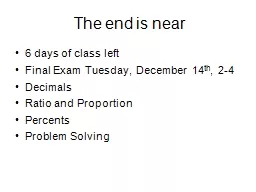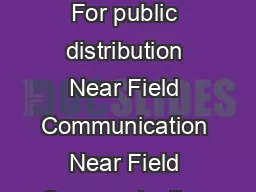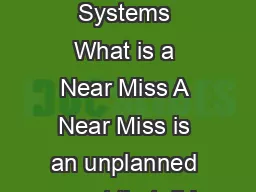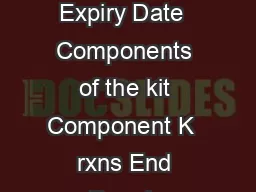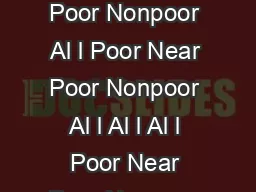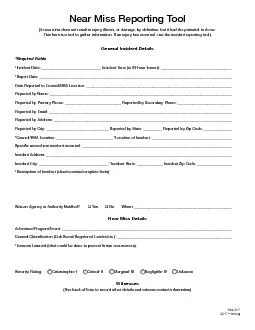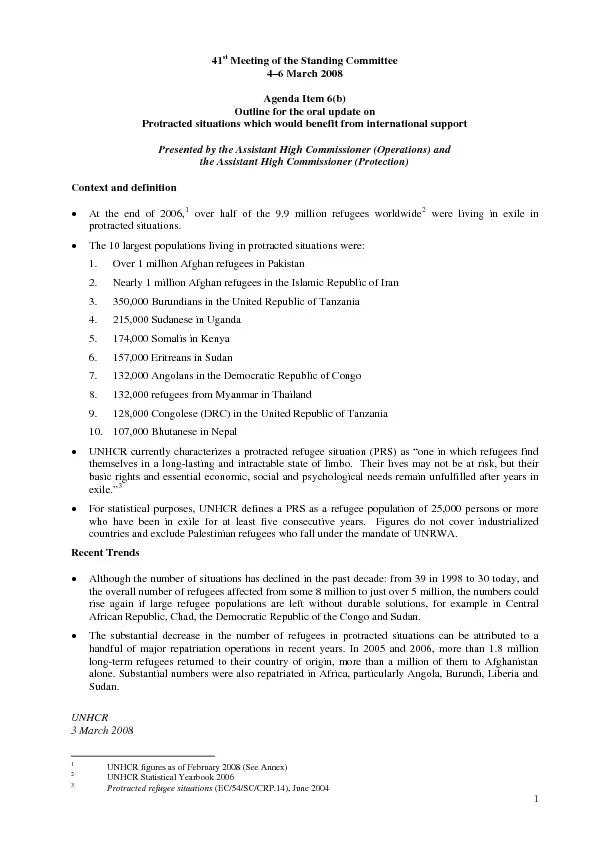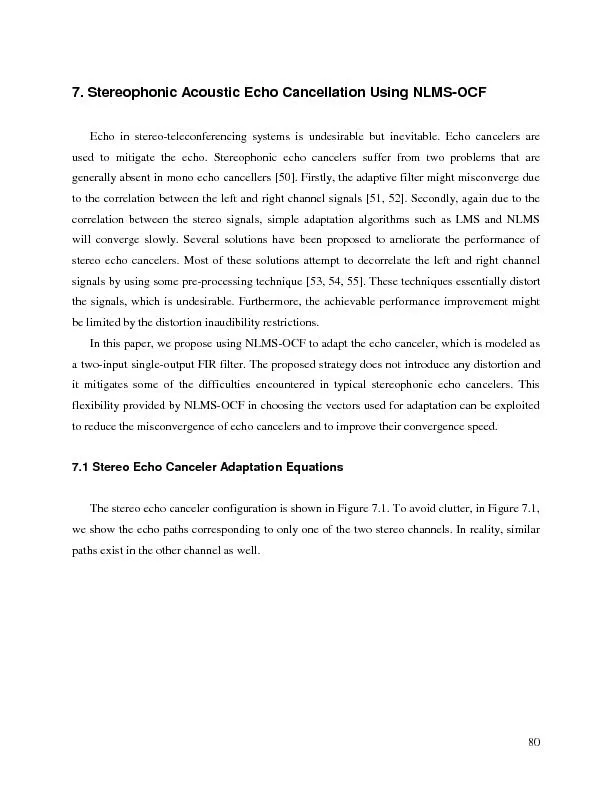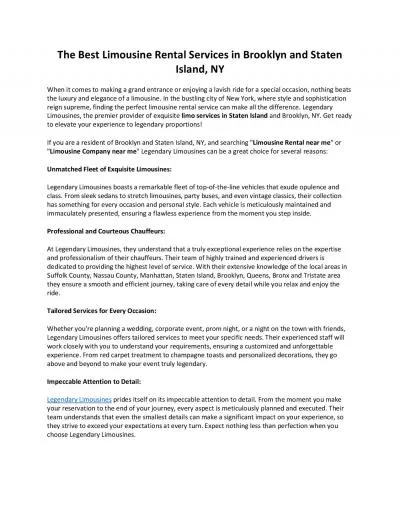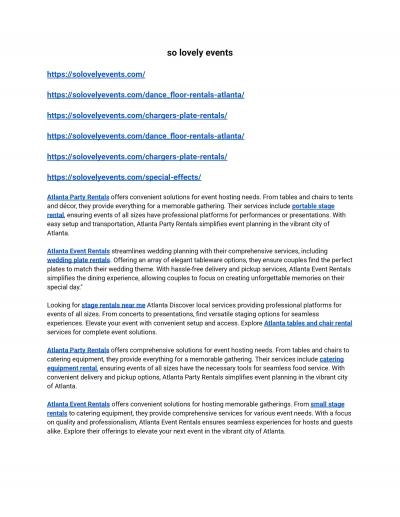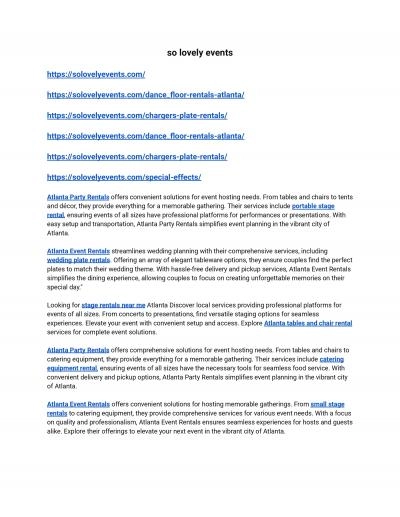PPT-The end is near
Author : ellena-manuel | Published Date : 2016-03-15
6 days of class left Final Exam Tuesday December 14 th 24 Decimals Ratio and Proportion Percents Problem Solving Decimals and place value Expanded form 324 0183
Presentation Embed Code
Download Presentation
Download Presentation The PPT/PDF document "The end is near" is the property of its rightful owner. Permission is granted to download and print the materials on this website for personal, non-commercial use only, and to display it on your personal computer provided you do not modify the materials and that you retain all copyright notices contained in the materials. By downloading content from our website, you accept the terms of this agreement.
The end is near: Transcript
Download Rules Of Document
"The end is near"The content belongs to its owner. You may download and print it for personal use, without modification, and keep all copyright notices. By downloading, you agree to these terms.
Related Documents

